Occupational Safety Training for Condominium Management and Operations
99,000 ₫
Note: The above price is calculated per person and may vary depending on the number of trainees participating in the course and market fluctuations. For more accurate pricing support, please refer to the pricing list or contact our consulting staff directly.
Occupational safety is an important issue when managing and operating apartment buildings and needs to be addressed promptly to ensure the health and safety of workers and enhance the reputation of businesses here. The Occupational Safety Training is one of the effective solutions to raise awareness on how to prevent occupational accidents for workers managing and operating apartment buildings.
Table of Contents
Toggle1. Overview of Apartment Buildings
a. What is an Apartment Building?
An apartment building, also called a condominium, is a type of housing constructed to share amenities and common living spaces among multiple households within the same building. Apartments in such buildings are usually arranged across multiple floors, which can be divided into different categories such as luxury apartments, affordable apartments, mini apartments, etc.
Common services and facilities often include security systems, maintenance, parking lots, playgrounds, sports fields, and communal areas. Apartment buildings are popular in large cities and are built to meet the housing needs of many people within an urban area.

b. Principles of Apartment Building Operation Management
Managing and operating an apartment building is a complex process aimed at ensuring the smooth functioning of services and common facilities for residents. Below are some basic principles for managing and operating apartment buildings:
- Financial Management: Including collecting management fees, maintenance fees, service fees (water, electricity, internet, etc.), managing budgets, and providing financial reports to residents.
- Maintenance and Repairs: Ensuring items like electrical systems, water supply, elevators, drainage systems, and common areas such as hallways, staircases, playgrounds, and gardens are regularly maintained and repaired.
- Security Management: Ensuring security for the entire apartment complex through measures such as installing surveillance cameras, secure entrances, and controlling external visitors.
- Office and Corridor Management: Including managing records, administrative procedures, document storage, and maintaining cleanliness in corridors and common areas.
- Living Environment and Community Development Management: Encouraging community interactions, organizing events, and maintaining a harmonious and safe living environment for all residents.
- Care and Improvement Management: Promoting quality of life by improving facilities and services, listening to residents’ feedback, and applying improvements.
- Compliance with Legal Regulations: Ensuring all management and operation activities fully comply with housing management laws and public safety regulations.
These principles must be strictly applied to ensure a well-maintained and safe living and working environment for residents.

2. Overview of the Apartment Operation Safety Training Course
a. What is Occupational Safety Training?
- Occupational safety training for apartment operation management consists of sessions designed to raise awareness about accident prevention for workers. Accordingly, workers who directly perform apartment management tasks fall under Group 3.
- The safety training course helps workers identify and prevent hazards, reducing risks of workplace accidents during their work.
REGISTER FOR OCCUPATIONAL SAFETY TRAINING SERVICE
b. Training Duration
Initial safety training duration:
- The total training time is at least 24 hours, including testing time.
- 8 hours of theoretical lessons on safety and labor hygiene policies and laws
- 8 hours of theoretical lessons on basic knowledge of occupational safety and hygiene
- 4 hours of theoretical lessons on specialized training content
- 2 hours of practical lessons on specialized training content
- 2 hours of final theoretical exam after training
The safety training center schedules training sessions depending on workers’ availability. Usually, there are 6 sessions over 3 days if the company arranges continuous study time.
Periodic safety training duration:
- Before the occupational safety card expires, workers who want re-issuance must undergo a periodic occupational safety training with a duration of at least 50% of the initial training time.
Explanation: The total periodic occupational safety training time is at least 12 hours, including the exam. After completing the periodic training and passing the test, workers will be re-issued or extended their occupational safety card.

c. Training Course Content
| No. | TRAINING CONTENT | TRAINING DURATION (HOURS) | |||
| Total | Including | ||||
| Theory | Practice | Test | |||
| I | Policies and Laws on Occupational Safety and Hygiene | 8 | 8 | 0 | 0 |
| 1 | Overview of legal documents system on occupational safety and hygiene. | 6 | 6 | ||
| 2 | Standards and technical regulations on occupational safety and hygiene. | 1 | 1 | ||
| 3 | Specific regulations of state management agencies on occupational safety and hygiene for new construction, expansion, or renovation of factories, facilities for manufacturing, use, storage, inspection of machines, equipment, materials, substances with strict occupational safety and hygiene requirements. | 1 | 1 | ||
| II | Basic Knowledge of Occupational Safety and Hygiene | 8 | 8 | 0 | 0 |
| 1 | Basic knowledge about hazardous and harmful factors at the workplace. | 4 | 4 | ||
| 2 | Methods to improve working conditions. | 1 | 1 | ||
| 3 | Safety culture in production and business. | 1 | 1 | ||
| 4 | Rights and obligations of employers and employees; safety and hygiene policies for workers; roles and duties of safety and hygiene network. | 1 | 1 | ||
| 5 | Safety and hygiene regulations, signs, instructions, use of safety equipment and personal protective gear; skills for first aid, accident prevention, occupational disease prevention. | 1 | 1 | ||
| III | Specialized Training Content | 6 | 4 | 2 | 0 |
| Comprehensive knowledge about machines, equipment, substances generating hazardous factors; analysis, risk assessment, occupational safety management, safe working procedures with machines, equipment, substances requiring strict occupational safety and hygiene compliance. | 6 | 4 | 2 | ||
| IV | Final Safety Training Content Examination | 2 | 2 | 0 | 0 |
| Total | 24 | 22 | 2 | ||
See more training contents of the 6 groups
d. Occupational Safety Card
After completing the occupational safety training course and passing the exam, workers will be issued an Occupational Safety Card (commonly known as Occupational Safety Certificate Group 3).
This Group 3 safety card clearly displays information such as full name, date of birth, job, and specific working environment. It also includes training duration, official red stamp, and signature confirming completion of the course.
According to regulations on card issuance specified in Clause 2 of Article 24 of Decree 44/2016/ND-CP, there are two cases:
- If the employer and employee have a labor contract, then the employer must sign, stamp, and affix a seal on the safety card for Group 3 employees after they have completed the training course from the occupational safety training unit and passed the exam.
- If the worker is freelance or temporary, without a labor contract, then the training unit must sign, stamp, and affix a seal on the safety card after the worker has completed the course and passed the exam.

3. Hazards for Workers in Apartment Management and Operation
When managing and operating apartment buildings, there are several hazards that workers must face and need to be effectively managed and minimized. Below are some main hazards:
- Occupational accidents: Maintenance and repair jobs such as working at heights, handling electrical and water systems can cause serious occupational accidents such as falls from height, electric shock, injuries when using repair tools.
- Health risks: Tasks related to painting, welding, and construction may cause respiratory, skin, and eye problems due to exposure to chemicals, dust, and fumes.
- Fire and explosion risks: Working with electrical systems, gasoline, and gas can pose explosion hazards if safety procedures are not properly followed.
- Security risks: Jobs involving security and surveillance may face risks of external violence, especially when dealing with strangers.
- Environmental hygiene risks: Managing living environments and using organic chemicals requires safe hygiene conditions to prevent occupational diseases and accidents.

4. Measures to Control Occupational Accidents in Apartment Management and Operation
To control and minimize occupational accident risks in apartment management and operation, the following measures can be applied:
- Training and education: Train managers and staff on hazards and accident prevention measures. Training courses should include the use of safety equipment, safe working procedures, and emergency response handling.
- Implement safe working procedures: Establish and comply with specific safe work procedures for each type of job, including the use of personal protective equipment (PPE), regular equipment inspection, and maintenance.
- Safety inspection of equipment and systems: Ensure that equipment such as elevators, electrical and water supply systems are regularly inspected and maintained to guarantee safety during use.
- Reasonable job assignment: Assign jobs based on employees’ competence and skills to minimize occupational accident risks. Additionally, supervise work processes to ensure compliance with safety procedures.
- Work environment control: Maintain a clean, safe working environment with adequate lighting and ventilation to reduce occupational accidents caused by unfavorable conditions.
- Periodically conduct occupational environment monitoring in the apartment buildings, collect and analyze harmful factors affecting workers and residents, then adjust to reduce hazards to prevent occupational diseases.
- Use modern technology and equipment: Apply new technologies such as security monitoring systems and advanced protective equipment to enhance employee safety.
- Build a safety culture: Promote occupational safety awareness within the resident community, enhance communication and feedback on safety issues so everyone contributes to maintaining a safe working environment.
These measures need to be implemented continuously and regularly to ensure that the living and working environment in apartment buildings is always safe for all residents and staff.
5. Benefits of Occupational Safety Training
An Toàn Nam Việt provides your business with great benefits upon completion of occupational safety training courses as regulated in Decree 44/2016/ND – CP on occupational safety and hygiene. Companies, factories, and enterprises can:
- Enable workers to recognize potential hazards of occupational accidents and thus take preventive measures to avoid accidents.
- Allow enterprises to establish risk prevention measures in production, operation, and maintenance processes.
- Minimize costs associated with occupational safety incidents.
- Maintain uninterrupted production, thereby increasing labor productivity and product quality.
- Comply with occupational safety laws, avoiding legal risks.
- Create credibility and professionalism in all aspects, thereby elevating your enterprise’s brand.
Nam Việt’s training courses are solutions to prevent and combat external factors that affect individuals so they can avoid dangers that may lead to injuries or worse, death.
REGISTER FOR OCCUPATIONAL SAFETY TRAINING SERVICE
6. Customer Feedback After Completing Training Courses
An Toàn Nam Việt has many years of experience accompanying numerous businesses across Vietnam, especially in southern provinces. This responsibility is extremely valuable to Nam Việt, so occupational safety training is increasingly professional. The motivation for An Toàn Nam Việt’s growth comes from positive feedback and suggestions from businesses. Below are testimonials from our partners.
Bắc Nam E&C Investment and Construction Joint Stock Company
“First time using the service at An Toàn Nam Việt, I was surprised by the enthusiastic 24/7 support from the consulting team. The class organization was quick and convenient for our company, thank you very much Nam Việt!”
Hoa Dat Construction and Trading Joint Stock Company
“Nam Việt’s service helped us greatly in simplifying occupational safety and completing safety dossiers for working processes. The consulting staff responded enthusiastically and promptly to our inquiries. 5 stars for Nam Việt.”
See more customer interviews after using An Toàn Nam Việt’s services
7. An Toàn Nam Việt’s Capacity in Occupational Safety Training
An Toàn Nam Việt is a reputable and quality occupational safety training center in Vietnam today. Continuous occupational safety training sessions are conducted at factories, manufacturing plants, and construction sites nationwide (in all 63 provinces of Vietnam).
REGISTER FOR OCCUPATIONAL SAFETY TRAINING SERVICE
Occupational safety training license
- An Toàn Nam Việt has been inspected and certified by the Safety Department of the Ministry of Labor – Invalids and Social Affairs as qualified to conduct occupational safety and hygiene training. This further solidifies our capacity in occupational safety training.

Training materials and lectures
- Before being used in occupational safety training courses, the training materials are reviewed and approved to ensure the content is accurate and effective when applied.
- Our instructors’ teaching methods follow the standards of An Toàn Nam Việt, developed by experts in occupational safety and hygiene training to maximize knowledge absorption for trainees.
Facilities
- Controlling classroom factors that affect training improves teaching efficiency and knowledge retention for trainees.
- Our training facilities feature spacious classrooms meeting standards for area, lighting, training equipment, etc.
8. Nationwide Reputable and Quality Safety Training Center
At An Toàn Nam Việt, we prioritize professional dedication to occupational safety training. For us, imparting knowledge so that workers know how to protect themselves equips them safely on their livelihood journey, contributing to nation-building.
To ensure effective training, we prepare carefully and meticulously every detail, from tools, teaching equipment to curricula, materials, sound, and lighting.
Our occupational safety instructors are experts with many years of experience. They even have research projects identifying hazards across industries and prevention methods.
Instructors’ lectures are practical and delivered vividly, easily understood by workers. These factors make learners comfortable and effectively absorb knowledge. Naturally, the knowledge provided strictly adheres to Decree 44/2016/ND-CP.
Thus, workers understand many prevention measures and how to protect themselves and apply them appropriately in real work situations.
Our training center proudly offers reputable and professional occupational safety training services with advantages such as:
- Competitive training costs with ensured quality.
- Flexible training schedules fitting companies’ production plans.
- Fast and legally compliant certification procedures.
- Experienced and senior instructors.
- Classroom conditions controlled to enhance teaching efficiency and knowledge retention.
- Training materials tailored to occupational safety needs of enterprises.
- An Toàn Nam Việt works dedicatedly and professionally to support customers accurately and promptly.

9. Additional Occupational Safety Training Materials
No comments yet

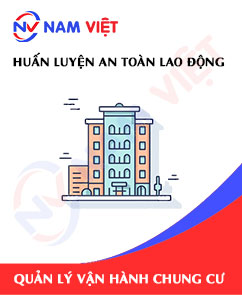
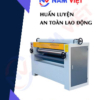




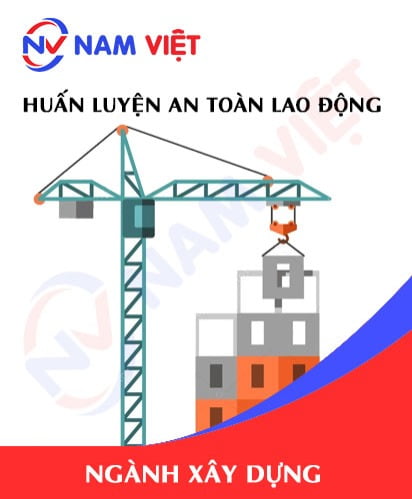




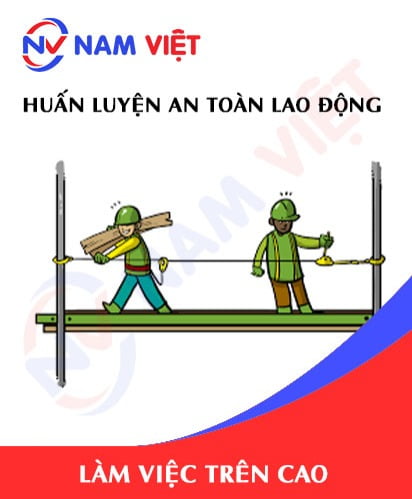
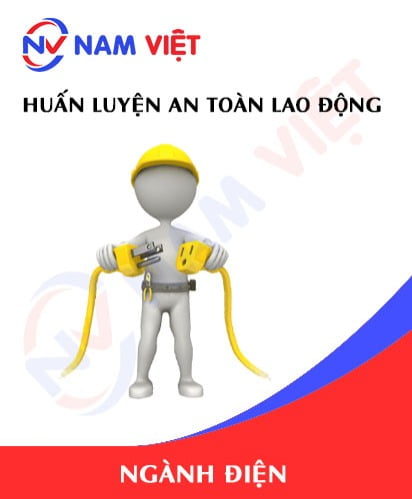

Review Occupational Safety Training for Condominium Management and Operations
There are no reviews yet.